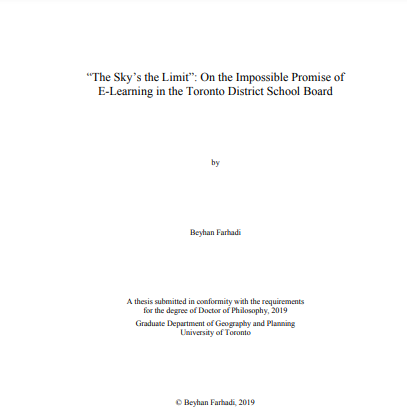
electronic resource
|
"The Sky’s the Limit" : on the impossible promise of e-learning in the Toronto District School Board
Copies
0 Total copies, 0 Copies are in,
0 Copies are out.
Digital Link
Authors
Subjects
Language
English







